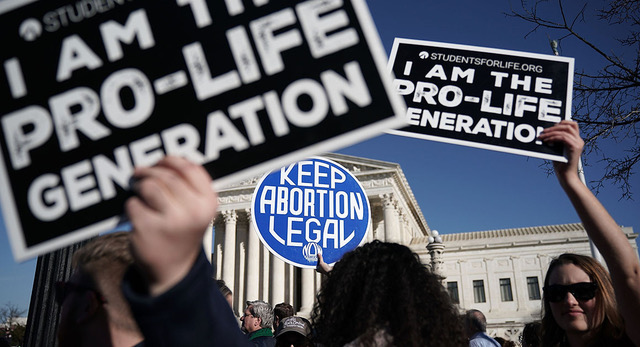Recently, Texas passed its controversial “heartbeat” law, banning all abortions after a baby’s heartbeat can be detected. As usual, with any law involving abortion, the winning side, conservatives, praised the law, and the losing side, liberals, criticized it. The usual phrases, murder, constitutional right, fetus, child, pro-choice, pro-life, have all been thrown around in the media. As I drove home from college, I turned on NPR, and heard reports of doctors crying because they could not complete the number of abortions demanded at the last minute by mothers. “What will these desperate women do?” a worried NPR anchor said. What she seemed to be saying was, “these women will be forced to raise their unwanted children”.
Our society has decided that abortion is the best option for an unwanted pregnancy. According to Planned Parenthood, 4 in 10 women with unplanned pregnancies choose an abortion, and 1 in 4 women have an abortion by the age of forty-five. Abortion is considered normal, rational, and even loving, as suggested by Planned Parenthood’s website. But is it really? Many women regret their abortions and suffer emotionally from their decision for years. There has not been a clearly defined statement released by the government as to when a human becomes a human and is given rights. The legal question remains: up to what point can an abortion be performed? Can a full-term newborn baby be killed if the parents do not want it? Finally, the actual facts about what an abortion is, how much pain a fetus suffers, and what is used in the process of aborting babies, is often not explained to the mother receiving the abortion. In addition, the physical pain, health hazards and emotional fallout for the mother are mostly ignored.
Despite these facts, our government continues to put abortion first and foremost in its funding. According to the Charlotte Lozier Institute, Planned Parenthood receives 543.7 million dollars through a combination of title X, Medicaid, and multiple other government programs. By contrast, the government’s main way of funding adoption, which many argue is a better option to abortion, is through tax credits. Parents who adopt a child receive a onetime $10,000 tax credit, but the government gives very minimal, if anything at all, to the adoption agencies themselves. In a nation where 47% of the population identifies as pro-life, according to Gallup polling, the government continues to direct most funding solely towards abortion. If the government is going to spend millions of dollars on unwanted pregnancies, maybe they could distribute it a little more evenly between the options of abortion and adoption. A private adoption costs around, $20,000- $45,000, while an abortion costs between up to $1,500.
Many women struggle to find alternatives to abortion. The very name pro-choice would suggest offering more than one choice. But how can a woman make the right decision if she is faced with the option of only aborting or raising her child alone? If we are going to become the pro-choice, open society, we are encouraged to be, we must first, be honest and open about what abortion really is, and second, we must give women alternatives to abortion, so that they have all the information and options to make an informed and ethical decision.

